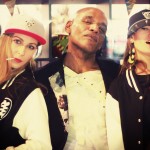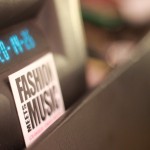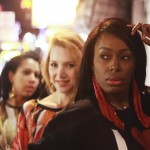So Rad Boutique has developed a line of eco hip, luxury clothing for babies and toddlers. After the birth of her son, founder Jasmine Bashaj combined her background in digital illustration and a successful line of greeting cards into an affordable clothing line for babies and toddlers using luxury bamboo fabrics. Frost interviewed Jasmine to find out more. 
Tell us about your brand
So Rad makes bebe & toddler apparel the is eco friendly, modern and affordable. Bamboo and
organic cotton fabrics, made in Canada – from start to finish. Not your average kind of stuff
either! Creative, functional and simple designs by a Mummy.
Catering to the layette newbie crowd, the crawlers & walkers and now for the little big kids with
sizes up to 6X.
How did you get it started?
I was inspired by my own kids. There are so many choices out there for Mummy and Daddy to
choose from and I wanted to narrow it down. I took elements I liked from different pieces and
put them together to make 1 piece. I started because I thought other Mum’s could also benefit
from my creations. I talked to other clothing manufacturers – small guys, talked to people in the
industry, suppliers. Emailed all over the world to compare products, prices. Weighed all of my
options and decided to get everything made in Canada.
When did your interest in fashion start?
I was interested in fashion when I was 12 – I used to design dress’:) I never thought I would end up
actually designing clothes! At the time, it was more of an artistic outlet. I went on to study illustration
and by trade, I am currently a digital illustrator, still doing freelance on the side.
Why children’s clothes?
Well, I’ve got kids and when you have kids, the world revolves around them. I’ve never really thought
about “why kids” it was just a given.
Where do you get your inspiration from?
Everywhere! Real life, nature, art, abstracts, urban, childhood memories, the mixed-tape generation,
geometry, patterns – should I go on?
Tell us about bamboo fabric.
I love love love this grass. So soft like silk when made into fabric, feeds Pandas and can be as solid as
steel when used for building materials. As a fabric, it’s amazing AND with benefits too! It’s naturally
organic, It grows like weeds – just try & kill it! My bamboo is actually certified organic.
It replaces full forrest canopies in about 3 years! It’s antibacterial, it’s hypoallergenic. It’s also naturally
moisture wicking. Great for cloth diaper inserts. It also gets softer as you wash it!
A little advice on bamboo fabric – you should avoid buying 100% bamboo for a couple reasons; Bamboo
is an interesting material – you could wash it once and it will stretch lengthwise and shrink widthwise.
You could wash it again and it could stretch widthwise and shrink lengthwise. You can hang it on a
hanger for a week and the arms could grown to the floor – very weird. Also, it is so silky, it could get
holes and rip at the seams. It’s weak on it’s own – it needs to be mixed with something, anything else
just to keep it’s “flexibility” in check. My fabric is 70% Bamboo, 30% Organic cotton.
What makes it better than other fabric?
Definitely for all that was mentioned above. What other fabric do you know can offer all of those
properties?
Any advice for people trying to start their own business?
I would say do your homework – research your industry, educate yourself.
Find more then 1 resource
Talk to lots of people who do the same as you – follow them on twitter, see what they’re saying.
Remember, these things take time, so don’t be discouraged if you don’t make a billion dollars in
a year.:)
Last but not least, be open to change and learning, this never stops.
What’s next for you?
More designs!.. Oh, and I’ve having baby #3 early May!:)










